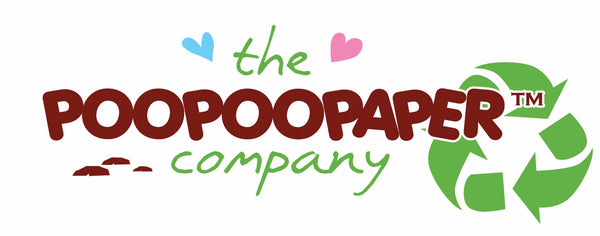
A Complete Guide on Sizes of Paper and Their History
Share
Choosing the right sizes of paper is a serious decision. They say size doesn’t matter—but tell that to an A0 sheet trying to fit into an A4 printer.
Have you ever wondered why A4 is the default paper size in most of the world? Why do the numbers get bigger but the size gets smaller? Or why North America insists on doing things differently? It all comes down to history and standardization. Here, POOPOOPAPER™ will dive in.

Early Paper Formats: Historical Sizes of Paper
Before sizes of paper were standardized, different regions used their own traditional sizes, often based on whatever was easiest to manufacture or most practical for writing and printing.
Early paper sizes were largely determined by handmade papermaking techniques. Since sheets were manually pressed and cut, measurements varied from place to place. Some of the most widely recognized traditional sizes of paper include:
- Double crown: 20 in x 30 in
- Double demy: 22.5 in x 35.5 in
- Double elephant: 26.5 in x 40 in
- Double foolscap: 17 in x 27 in
- Foolscap: 8 in x 13 in
These sizes worked well enough within their respective regions, but as printing and international trade grew, the need for consistency became more pressing.
The ISO 216 Standard: How Paper Got Its “A” Game
To solve the issue of inconsistent paper sizing, scientists and governments sought to create a logical, universally accepted system.
The Birth of the A-Series Sizes of Paper
The roots of the A-series of sizes of paper go back to 1786 when German scientist Georg Christoph Lichtenberg proposed the system. His idea was a standardization where each paper size would maintain the same proportions when halved. Despite this, it wasn’t until 1922 that Germany formally adopted this. Finally, the system spread worldwide under ISO 216.
The Genius of the A-Series
Wondered why each piece of paper gets smaller, the bigger the number gets? Here’s what makes the A-series a simple, yet genius standardization. By following a √2:1 aspect ratio, every time you fold or cut a sheet in half, the two new sheets retain the same proportions. This is brilliantly practical because:
- Scaling documents up or down is seamless—an A3 poster can shrink to an A4 flyer without distortion.
- Printing efficiency improves, reducing waste when cutting sheets to different sizes.
- Storage and organization become easier, since everything follows a consistent logic.
A-Series Paper Sizes
|
Size |
Dimensions (mm) |
Dimensions (inches) |
|
A0 |
841 × 1189 |
33.1 × 46.8 |
|
A1 |
594 × 841 |
23.4 × 33.1 |
|
A2 |
420 × 594 |
16.5 × 23.4 |
|
A3 |
297 × 420 |
11.7 × 16.5 |
|
A4 |
210 × 297 |
8.3 × 11.7 |
|
A5 |
148 × 210 |
5.8 × 8.3 |
|
A6 |
105 × 148 |
4.1 × 5.8 |
|
A7 |
74 × 105 |
2.9 × 4.1 |
|
A8 |
52 × 74 |
2.0 × 2.9 |
When the A series doesn’t cut it, there is also the “B Series” which is used when the A Series is too big or too small. The B Series is also defined by the international ISO 216. They tend to be used in posters, books, envelopes, and passports.
Most of the world uses ISO 216. Europe, Asia, Africa, and South America all implement the ISO 216 because of its practicality and efficiency. But, of course, North America had to do its own thing (as always).
North American Paper Standards
While much of the world embraced A4, the United States and Canada continued using their own paper standards, which date back to the 1920s.
Common U.S. Paper Sizes
|
Size |
Dimensions (inches) |
Dimensions (mm) |
|
Letter |
8.5 × 11 |
216 × 279 |
|
Legal |
8.5 × 14 |
216 × 356 |
|
Tabloid |
11 × 17 |
279 × 432 |
Why the U.S. Uses Different Sizes of Paper
So, why does the U.S. stick with Letter (8.5 × 11) while most of the world uses A4? Well, it’s a mix of history, practicality, and a bit of stubbornness.
- Already Set in Stone – By the time international standards became common practice, the U.S. had already been using Letter size for government and office documents. Changing everything—forms, filing systems, and printers—would have been too much of a change. It would have cost a lot of money and confusion.
- Too Much to Change – Imagine trying to swap out every printer, folder, and paper tray in offices across the country. Converting to A4 would have been a logistical mess, so businesses simply stuck with what they knew.
- A Missed Opportunity – The American National Standards Institute (ANSI) actually created a paper size system similar to ISO, but it never really caught on. By then, Letter size was already too ingrained.
So, while the rest of the world happily prints on A4, North America keeps doing its own thing—leading to some annoying formatting issues for international businesses and anyone trying to print a document in the "wrong" region.
Learn More About Paper with POOPOOPAPER
The history of paper is full of twists and turns. Still curious about how paper evolved and became what it is today? Give POOPOOPAPER™’s article on the History of Paper page a read for more.
